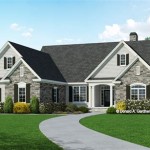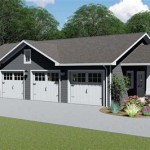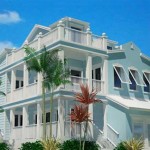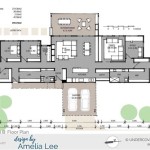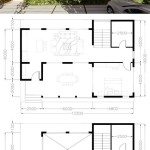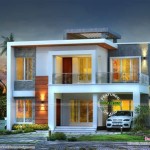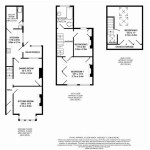View Lot House Plans: Maximizing Scenic Potential in Residential Design
View lot house plans are specifically designed to capitalize on the unique opportunities presented by properties with significant scenic vistas. These plans prioritize the integration of indoor and outdoor spaces, strategically positioning rooms and architectural elements to frame and enhance the natural beauty surrounding the home. This approach differs significantly from standard house plans, requiring a deeper understanding of site orientation, topography, and the principles of landscape architecture.
The success of a view lot house plan hinges on its ability to not only capture the view but also to create a comfortable and functional living environment. Considerations extend beyond mere aesthetics, encompassing factors like sun exposure, wind patterns, and privacy from neighboring properties. A well-executed view lot house plan harmonizes with its environment, creating a seamless transition between the built structure and the natural landscape.
Understanding Site-Specific Considerations for View Lot House Plans
The initial stage of developing a view lot house plan involves a thorough assessment of the property itself. This site analysis is crucial for determining the optimal placement of the home and the best way to orient it to maximize the view. Important factors to consider include:
*Orientation:
The direction the property faces plays a significant role in determining the amount of sunlight the house will receive throughout the day. South-facing properties generally receive the most sunlight, while north-facing properties receive the least. East-facing properties receive morning sun, and west-facing properties receive afternoon sun. The placement of large windows and outdoor living areas should be carefully considered to optimize sun exposure and minimize glare. *Topography:
The slope of the land will influence the design of the foundation and the overall layout of the house. A sloped lot may offer opportunities for multi-level designs with walk-out basements or decks that cascade down the hillside. However, it can also present challenges in terms of accessibility and drainage. *Prevailing Winds:
Understanding the direction and intensity of prevailing winds is crucial for creating comfortable outdoor living spaces. Windbreaks, such as trees or walls, may be necessary to protect these areas from strong winds. The orientation of windows and doors should also be considered to minimize drafts and maximize natural ventilation. *Vegetation:
Existing trees and vegetation can provide shade, privacy, and visual interest. A well-designed plan will preserve mature trees and incorporate them into the landscape design. The planting of new trees and shrubs can further enhance the view and create a more natural setting. *Local Building Codes and Restrictions:
Zoning regulations, height restrictions, and setback requirements can all impact the design of a view lot house plan. It is essential to research these regulations early in the planning process to ensure that the proposed design complies with all applicable requirements.An experienced architect or designer specializing in view lot properties can assist in conducting this site analysis and incorporating the findings into the preliminary design. This preliminary analysis often incorporates detailed surveys, including topographical surveys and analysis of existing vegetation.
Key Design Elements in View Lot House Plans
Several key design elements are commonly incorporated into view lot house plans to maximize the scenic potential of the property. These elements are carefully integrated to create a harmonious balance between the interior and exterior spaces.
*Large Windows and Glass Doors:
Expansive windows and sliding glass doors blur the lines between indoor and outdoor living, allowing natural light to flood the interior and providing unobstructed views of the surrounding landscape. These features are strategically placed in key living areas, such as the living room, dining room, and master bedroom, to maximize the impact of the view. *Open Floor Plans:
Open floor plans create a sense of spaciousness and allow for panoramic views throughout the house. By eliminating interior walls, these plans maximize the flow of light and air and create a more connected living environment. The open concept often extends to outdoor spaces, creating a seamless transition between the interior and exterior. *Decks, Patios, and Balconies:
Outdoor living spaces, such as decks, patios, and balconies, are essential components of view lot house plans. These spaces provide opportunities to enjoy the view, entertain guests, and relax in the natural surroundings. They are often designed as extensions of the interior living spaces, creating a seamless transition between the indoors and outdoors. The location, size, and orientation of these outdoor spaces are carefully considered to optimize sun exposure, privacy, and views. *Strategic Room Placement:
The placement of rooms is carefully considered to maximize the view and create a functional living environment. Rooms that benefit most from the view, such as the living room, dining room, and master bedroom, are typically located on the view side of the house. Less frequently used rooms, such as bedrooms, bathrooms, and utility areas, may be located on the opposite side. *Natural Materials:
The use of natural materials, such as wood, stone, and glass, helps to blend the house with its natural surroundings. These materials create a warm and inviting atmosphere and add to the overall aesthetic appeal of the design. The choice of materials should also consider the local climate and the need for durability and low maintenance. *Integration with the Landscape:
A well-designed view lot house plan will integrate seamlessly with the surrounding landscape. This may involve the use of landscaping to enhance the view, create privacy, and provide shade. The design should also consider the natural contours of the land and minimize the impact on the environment.These design elements work together to create a home that is both functional and aesthetically pleasing, maximizing the enjoyment of the view and creating a comfortable living environment.
Addressing Challenges and Optimizing Efficiency in View Lot House Plans
Designing a view lot house plan also presents unique challenges that need to be addressed to ensure the long-term comfort, efficiency, and sustainability of the home.
*Sunlight Control:
While large windows and glass doors are essential for capturing the view, they can also lead to excessive heat gain and glare. Strategic placement of overhangs, awnings, and window tinting can help to mitigate these issues. The type of glass used in windows and doors should also be carefully considered to optimize energy efficiency and minimize glare. *Privacy:
Maintaining privacy from neighboring properties can be a challenge in view lot properties, especially if they are located in densely populated areas. Strategic placement of landscaping, fences, and walls can help to create a sense of privacy without obstructing the view. The orientation of windows and doors should also be considered to minimize visibility from neighboring properties. *Wind Resistance:
Properties located on hillsides or ridges are often exposed to strong winds. The design of the house should take this into account, with features such as windbreaks and reinforced construction. The orientation of windows and doors should also be considered to minimize drafts and maximize natural ventilation. *Energy Efficiency:
Maximizing energy efficiency is crucial for reducing the environmental impact and long-term operating costs of the home. This can be achieved through the use of passive solar design principles, such as orienting the house to maximize solar gain in the winter and minimize solar gain in the summer. Other strategies include the use of high-performance windows and insulation, energy-efficient appliances, and renewable energy sources, such as solar panels. *Accessibility:
Sloped lots can present challenges in terms of accessibility, especially for individuals with mobility issues. The design should consider the need for ramps, elevators, and other accessibility features. The placement of parking areas and walkways should also be carefully considered to ensure easy access to the house. *Water Management:
Proper water management is essential for preventing erosion and protecting the foundation of the house. This can be achieved through the use of drainage systems, such as swales and French drains, and through the selection of drought-tolerant landscaping. The design should also consider the need for rainwater harvesting systems to conserve water.By carefully considering these challenges and implementing appropriate design strategies, it is possible to create a view lot house plan that is both beautiful and sustainable, maximizing the enjoyment of the view while minimizing the impact on the environment. This requires collaboration between the architect, landscape architect, and builder to ensure that all aspects of the design are carefully coordinated.
Ultimately, a successful view lot house plan is a testament to thoughtful design, careful consideration of site-specific factors, and a commitment to creating a harmonious relationship between the built environment and the natural landscape.

Great For The Rear View Lot 35440gh Architectural Designs House Plans

Look Out 4 House Plans With Lookout Towers Blog Eplans Com

Modern Narrow House Plan View Park Beach Plans Designs

It Is Common To Find Expansive Patios Decks Or Walkout Basements In View Lot House Plans These Are Seamlessly Connected Basement Design

Modern House Plan Sloping Lot Contemporary Style 5590 Vista

Plan 056h 0005 The House

House Plans W Great Front Or Rear View Drummondhouseplans Com

House Plans With Windows For Great Views

Frame Plan Of A House With Single Pitched Roof In The Style High Tech Basement

Home Plans With Lots Of Windows For Great Views


